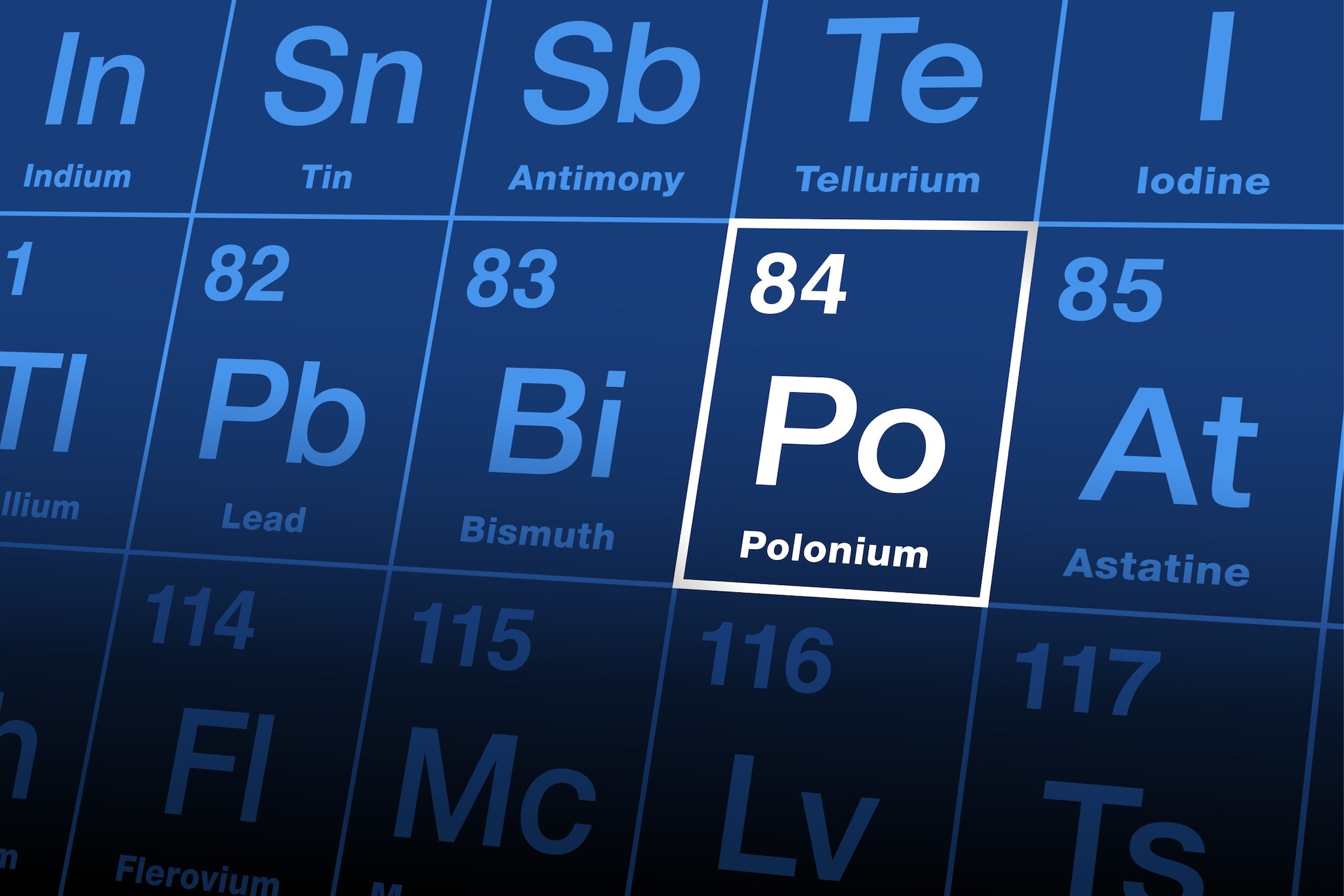At a glance
Polonium-210 (Po-210) is an extremely hazardous radioactive material. It must be inhaled or ingested to be toxic. Tobacco product users may have higher levels of Po-210.

Background information
Polonium 2-10 is one of the most hazardous radioactive materials known. However, it must be inhaled or ingested to exert its toxic effects. It is found naturally in the environment, and the general population has small but measurable amounts of it. Ingestion occurs on a regular basis through food, water, and air.
Tobacco leaves are known to concentrate Po-210. Users of tobacco products are likely to have higher levels of this radioactive element in their bodies. Po-210 decays to a stable isotope of lead (Pb-206) by emitting alpha particles. The largest part of the alpha dose is delivered over the first 100 days following a single administration.
Between 50% and 90% of ingested polonium promptly appears in the gastrointestinal (GI) tract. From there it leaves the body in the feces. The retained fraction enters the bloodstream where it concentrates in the soft tissues.
Approximately 45% of ingested Po-210 is deposited in the spleen, kidneys, and liver. Around 10% is deposited in the bone marrow and the remainder is distributed throughout the body. Within the bloodstream, polonium combines with the globin portion of hemoglobin.
The physical half-life of Po-210 is about 140 days. Physical half-life is a measure of the time required for one-half of the activity of a radioactive substance to be lost. The activity of a particular substance is lost due to radioactive decay. The whole body biological half-life of Po-210 is approximately 50 days. Biological half-life is a measure of the time required for biological processes to eliminate one-half of the radionuclide in the body.
The effective half-life is the time required for both physical and biological half-lives to reduce the activity by 50 percent. For Po-210, the effective half-life is approximately 40 days.
